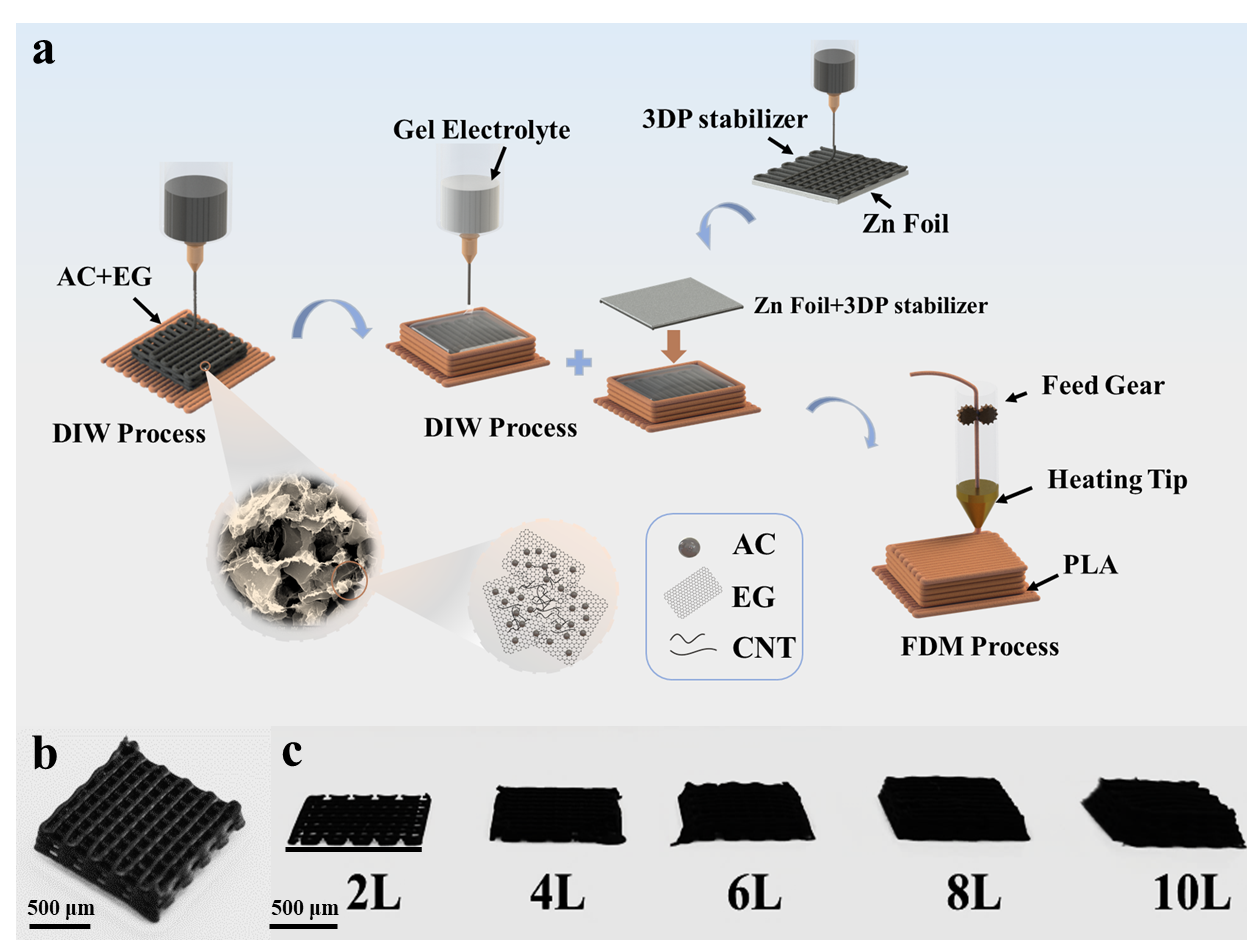Y. Liu, S.h. Zheng*, J.X. Ma, X. Wang, L.Z. Zhang, P. Das, K. Wang, Z.-S. Wu*
Advanced Energy Materials, 2022, 12, 2200341.
DOI: 10.1002/aenm.202200341 [PDF]

Aqueous zinc ion hybrid capacitors (ZIHCs) with notable advantages like cost-effectiveness and safety are promising new-generation electrochemical energy storage devices (EESDs). However, unsatisfactory areal capacitance, zinc dendrites and rigid form factor of typical aqueous ZIHCs impede their further practical applications. Herein,we developed a protocol for3D-printing shape-conformable ZIHCs, includinghierarchically porous micro-lattice cathode, metal anode stabilizer, quasi-solid gel electrolyte and plastic packages,through direct ink writing and fused deposition modeling methods.Among these components, micro-lattice cathodes with high mass loading density of 22.8 mg cm-2effectively improved the areal capacitance of ZIHCs, and the metal anode stabilizer sufficiently inhibited dendritic growth to prolong the cycle life of ZIHCs. As a result, the obtained all 3D-printed ZIHCs deliverahighareal capacitance of 4259 mF cm-2as well as aconsiderableenergy density of 1514𝜇Wh cm-2, surpassing most reported ZIHCs. The 3D-printed metal anode stabilizer endows ZIHCs withbettercycling stability with almost no capacitance loss after 10000 cycles. Impressively, the ZIHCs could be easily manufactured into shape-conformable devices encapsulated by 3D-printed poly lactic acid package, demonstrating their viability. Therefore, this all 3D-printing strategy provides a general and innovativemethodologyfor constructing customizedEESDs.